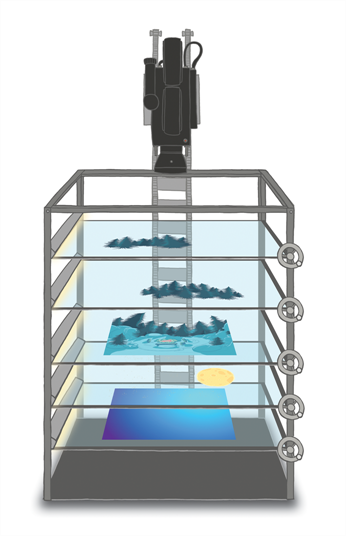- Modules
- History of Animation
- Key Events and Inventions
Key Events and Inventions
T-PRIN-001-004
A lot of events built the world of animations. Here are some of the main ones.
The Movie Camera
The movie camera was invented in the early 1900s. The camera was equipped with a hand-crank to transport the unexposed film frame-by-frame through the camera. This mechanism allowed the user to start and stop filming as necessary. People quickly discovered that the frame-by-frame technique would allow them to animate images drawn on paper. Emile Cohl was one of the first to experiment with this form of animation.
Winsor McCay and Gertie the Dinosaur
In February 1914, Winsor McCay created an animated film of a dinosaur he called Gertie. It was the first time that an animated character exhibited personality. Gertie the Dinosaur would hide behind rocks, drink water, dance and even cry!

McCay brought Gertie to life through thousands of hand-drawn images on paper. He would carefully flip through the drawings to ensure that the animation appeared smooth and fluid.
The Peg Bar

Around 1915, French Canadian painter Raoul Barré created standard perforations on drawing paper and the peg bar that's still in use today. The holes in the paper serve to perfectly align each drawing on the peg bar, preventing any jerkiness in the animation once it's filmed.
The Rotoscope
Around 1915, Max Fleischer invented the rotoscope. This machine allowed the user to transfer a live-action film into frame-by-frame drawings to create animation.
The Many Innovations of the Walt Disney Studios
Walt Disney was a pioneer in what was to become the standard methods of production in an animation studio. The Walt Disney Studios introduced the storyboard, a visual script that helps animators keep track of what's transpiring in a film while it's being created.
Many of the animated short movies created by the Walt Disney Studios have made history. In 1928, Steamboat Willie was the first cartoon to use synchronized sound. In this film, Mickey Mouse whistles a tune, the boat's whistles toot, while birds and animals squawk, all of them synchronized with the music and sound effects accompanying the film. In 1932, the film Flowers and Trees was the first animation to introduce the Technicolor process technology.

In 1933, the former Walt Disney Studios animator Ub Iwerks invented the multiplane camera. This special camera is used to move through a number of different layers in a scene to create the perception of depth. The multiplane camera, which was set up vertically much like a photographic enlarger, would shoot down through as many as five planes. The planes were attached to vertical posts that allowed four of the planes to move independently of one another. The first two planes were used for animation, the next two were for backgrounds, and the fifth was fixed and used for sky backgrounds. The finished result produced a depth of perspective which had not previously been seen in animated film.
Next Topic
Activity 1: Build a Thaumatrope
Time Estimated 15 mins
Difficulty Level Beginner
Topics List
- History of Animation
- Persistence of Vision
- Optical Toys
- Key Events and Inventions
- Activity 1: Build a Thaumatrope